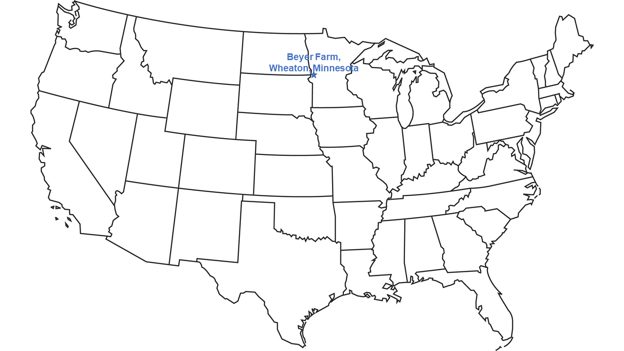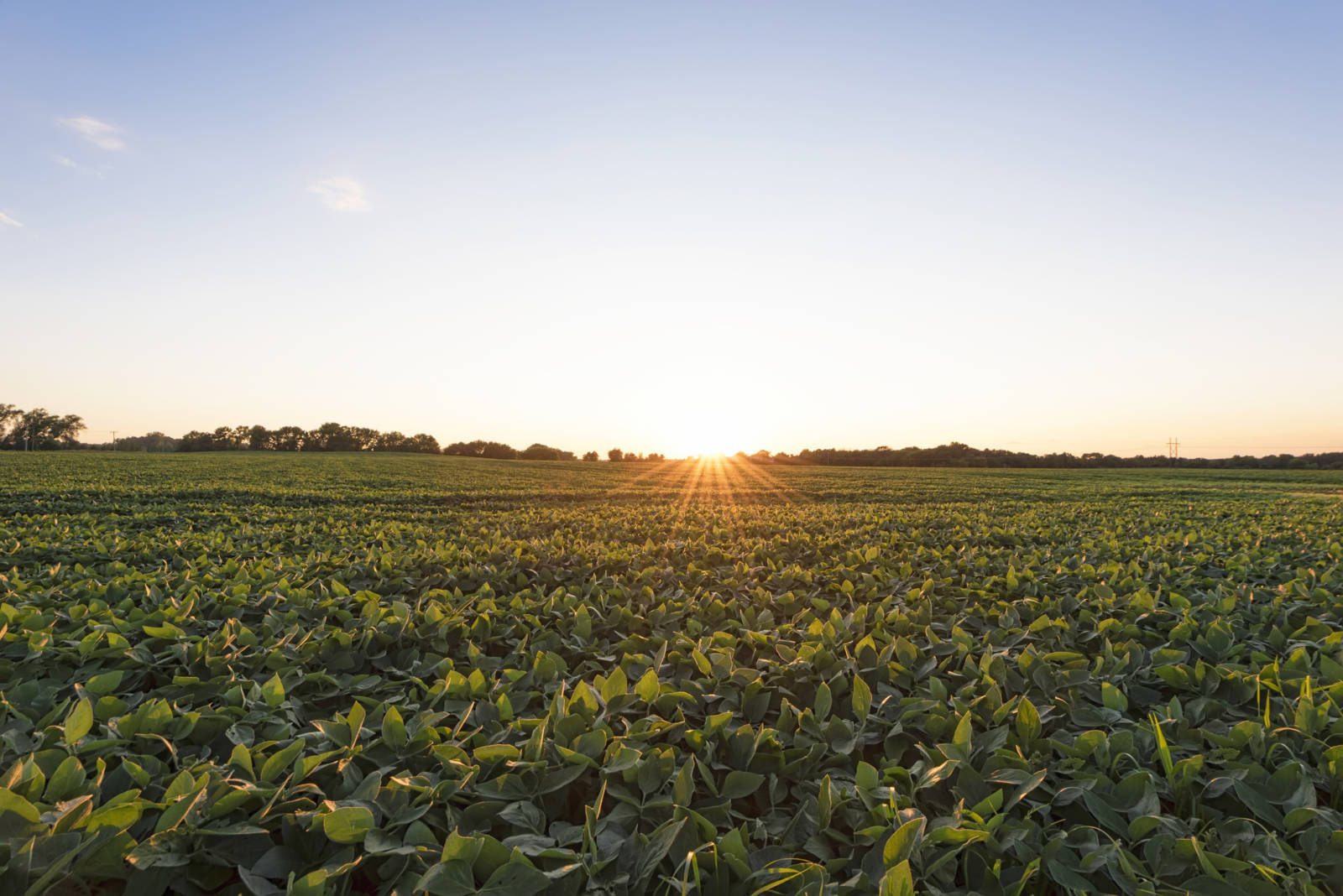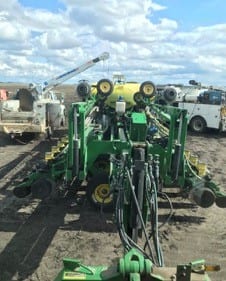 Our biggest challenge with our heavier soil types is getting good crop emergence and a healthy stand each year. The soil surface can be crusty because of wind or weather conditions, challenging germinating seeds as they come through it. But this year we’ve gotten a very good stand for all our crops. My husband Rodd considers that 90 percent of our work for the year, because it gives us something to work with the rest of the season.
Our biggest challenge with our heavier soil types is getting good crop emergence and a healthy stand each year. The soil surface can be crusty because of wind or weather conditions, challenging germinating seeds as they come through it. But this year we’ve gotten a very good stand for all our crops. My husband Rodd considers that 90 percent of our work for the year, because it gives us something to work with the rest of the season.
Timely rains have helped the crops grow well. But during June, our region of the north-central U.S. Midwest had about 10 days of what early settlers apparently called “furnace winds” because they blew hot and dry for so long. One or two windy days are common, but this was unusual. These winds blew 40 to 55 km per hour, or 25-35 miles per hour, all day and all night throughout those 10 days. Fortunately, the crops were very small during this time, so they weren’t damaged. Blowing crop debris and the wind itself did beat up the young soybean leaves, but the plants quickly grew out of it.
These winds came when we needed to be applying herbicides to control weeds in all our crops. We don’t apply herbicides in heavy winds because we want it to stay with the crop, and not blow away. Fortunately, after the furnace winds stopped, we had a few calm days that allowed us to catch up on weed control.
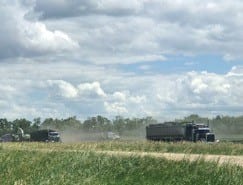 In all our crops, we apply a combination of a contact herbicide that controls emerged weeds and a residual herbicide that controls weeds as they germinate while the young crops are growing. This protects them all from having weeds compete for the soil moisture and nutrients they need. And, the combination should control weeds until the crops are large enough to shade the ground themselves to prevent weeds from growing.
In all our crops, we apply a combination of a contact herbicide that controls emerged weeds and a residual herbicide that controls weeds as they germinate while the young crops are growing. This protects them all from having weeds compete for the soil moisture and nutrients they need. And, the combination should control weeds until the crops are large enough to shade the ground themselves to prevent weeds from growing.
First, we sprayed our sugar beets. They were sprayed when the root is about the diameter of a common pencil. We focused on the corn after that, when the plants were about 15 to 20 cm, or 6 to 8 inches, tall. We just finished applying herbicide to our soybeans, and they were about 10 to 15 cm, or 4 go 6 inches, tall.
We also had the second cutting of our alfalfa field to make haylage. The local dairy that buys it for feed has a custom harvester cut the field every 28 days. They cut the alfalfa and gather it in long rows that they blow into a truck. They collect it to pile in their feed lot, rather than baling it. The alfalfa is yielding about half of what it did last year, well below average. It likely isn’t getting the moisture it needs. Some of the smaller rains we’ve had have missed this field, and the furnace winds likely dried it out significantly.
All our other crops are looking really good, and we have adequate moisture in the soil. Following the longest day of the year for us, June 20, the amount of daylight signaled our soybeans to start flowering, and they have. The corn is growing quickly – you can see the difference in height from one day to the next.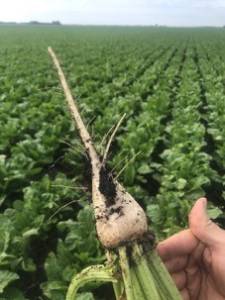
As the sugar beets grow, we have to protect them from a disease called Cercospora leaf spot. We have done our first application of fungicide for this crop, and we will apply fungicide every 10 to 12 days for the rest of the season to keep the crop healthy. Some of these fungicides are preventative, meaning the keep the fungus from growing on the crop leaves. But we also use curative fungicides if it starts growing on the leaves.
The spring wheat is starting to head, meaning the ear that will grow wheat kernels is starting to emerge from the main stem of the plant. We will apply fungicide to protect the wheat quality against several types of diseases. It will be applied by a small airplane, called a crop duster, that will fly low over the field to release fungicide solution.
We will continue scouting all our crops for weeds, diseases and insects.
We have also started hauling our 2019 crops from storage on our farm to our customers. We take our soybeans to a local elevator that is part of our export value chain. Our corn goes to a local ethanol plant. Although the plant closed during April and May because of low demand triggered by COVID-19, it is now open and accepting corn to make into biofuel.
And when we have a bit of rare free time, we enjoy a trip to the lake!
